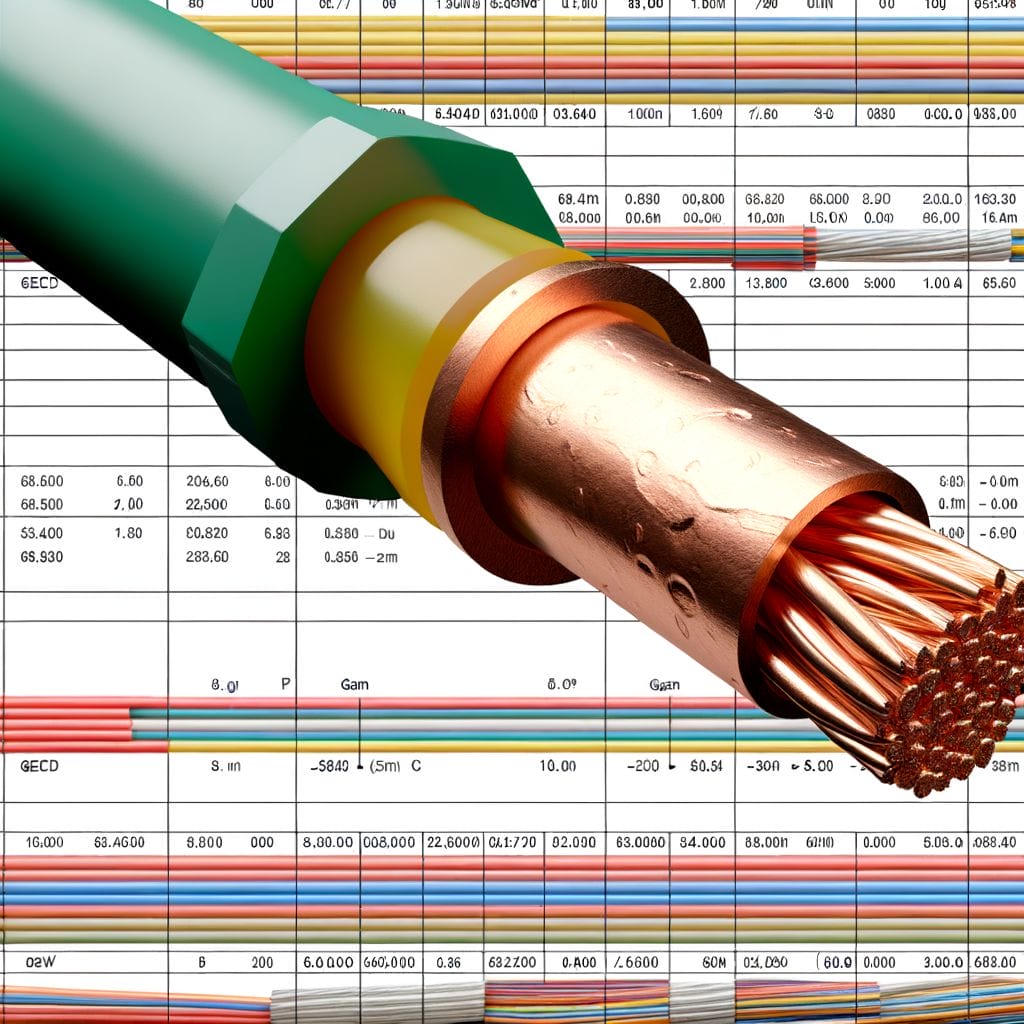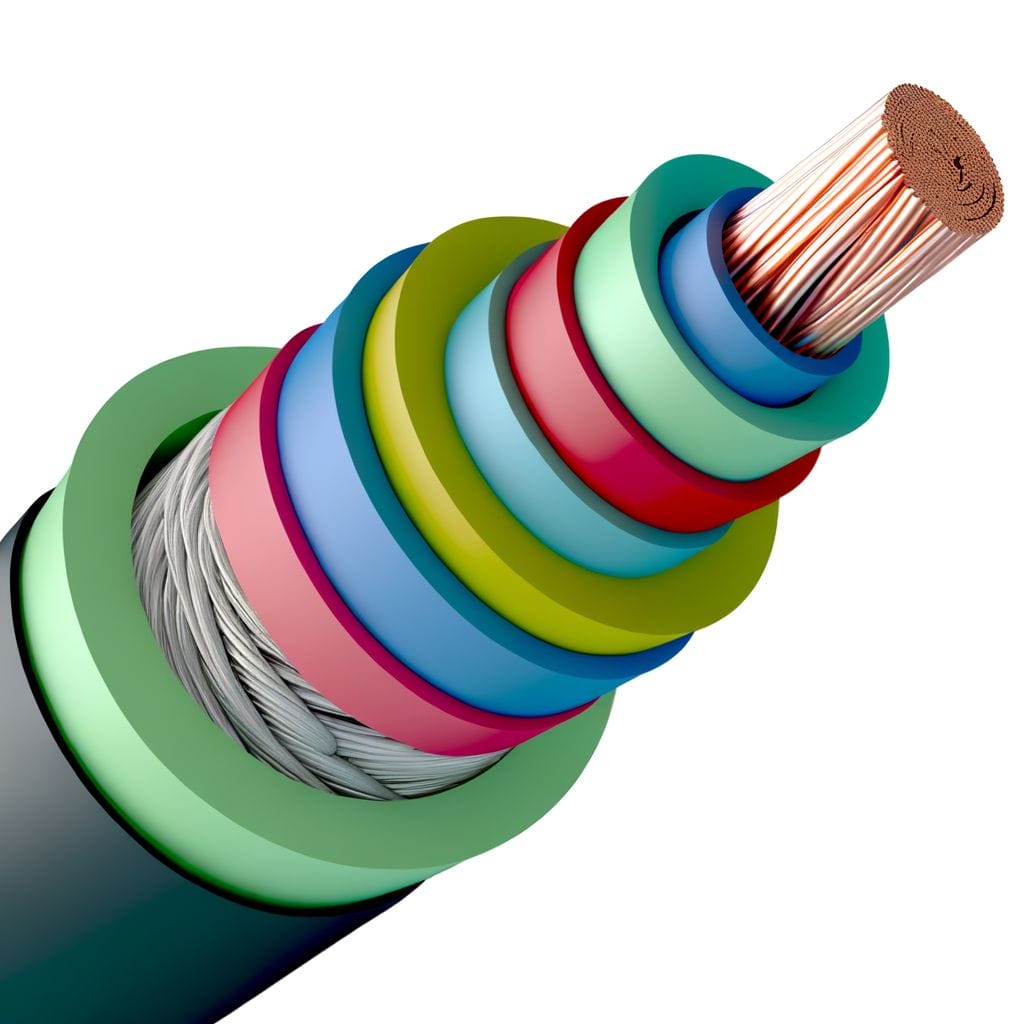8 Gauge Wire Rating: Understanding Wire Amp Ratings
Ever pondered the intricacies of an 8 gauge wire and its amp ratings? Understanding the actual ampacity and temperature rating of a wire is more interesting than you might think. Wire gauging isn’t just about the physical thickness of the wire but also its capacity to handle electrical current.
The 8 gauge wire, for instance, holds specific amp ratings crucial for its safe and efficient usage in various applications. But how does an 8 gauge wire differ from other gauges, and what exactly does its amp rating mean? In our ‘8 Gauge Wire Rating’ guide, we will unravel these intricate details together.
Key Takeaways
- Wire gauging is the process of measuring the diameter of a wire, and the diameter of a wire directly affects its current-carrying capacity or ampere rating.
- The 8 gauge wire has a larger diameter than a 10 gauge wire and can carry more current.
- The amp rating of an 8 gauge wire is its ability to safely carry electric current, and it is important to adhere to the amp rating for safety.
- Aluminum wires are less costly but have lower conductivity and durability compared to copper wires, which are more commonly used in electrical systems.
Understanding the Fundamentals of Wire Gauging and the 8 Gauge Wire

Wire gauging is a crucial concept in electrical engineering, vital for the safe and efficient operation of electrical systems. It refers to the process of measuring the diameter of a wire. This diameter is inversely proportional to the wire’s number on the American Wire Gauge (AWG) system.
Therefore, an 8 gauge wire has a larger diameter than a 10 gauge wire. The diameter directly affects the wire’s current-carrying capacity, or ampere rating. Consequently, a wire with a larger diameter, such as the 8 gauge wire, can carry more current than a wire with a smaller diameter.
The 8 gauge wire, capable of handling 40 amps, plays a significant role in a myriad of electrical systems due to its high ampacity. It can handle higher levels of electrical current, making it an excellent choice for systems that require substantial power. From heavy-duty machinery and electrical vehicles to large household appliances is a reliable choice for ensuring smooth and steady power flow.
Delving into the Specifications of the 8 Gauge Wire

Amps represent the flow rate of electricity, and the amp rating of a wire is its ability to safely carry that electric current. Understanding wire amp ratings and how the selection of wire depends on different applications is essential. It’s not just about the physical dimensions of the wire, but also its capacity to handle specific loads without overheating or causing any electrical hazards. The ampacity of the wire defines this capacity.
The 8 gauge wire rating is a critical factor to consider because it defines the maximum amount of current the wire can safely carry. This rating is outlined in the National Electrical Code (NEC), which sets safety standards for electrical design, installation, and inspection to safeguard people and property from potential electrical hazards.
As we delve into the specifications of the 8 gauge wire, we need to consider:
- The amp rating or ampacity of the 8 gauge wire
- The role of the National Electrical Code in determining the wire rating
- The importance of understanding wire amp ratings
- The dimensions of wire sizes and what they mean
- The impact of wire size on electrical load, safety and temperature rating.
Recognizing the Amp Rating and Handling Capacity of an 8 Gauge Wire

To fully appreciate the capabilities of an 8 gauge wire, we need to recognize its amp rating and understand its capacity to handle electrical current safely. This understanding is crucial in harnessing the full potential of the 8 gauge wire while ensuring safety.
The 8 gauge wire rating is often determined using the American Wire Gauge (AWG) system. This system rates wire thickness, with the 8 gauge wire being thicker and, thus, capable of handling larger amounts of current than higher-numbered gauges. When considering the amp rating and handling capacity, an 8 gauge wire can typically handle around 40 to 60 amps at a temperature of 140°F.
Differentiating Between Aluminum and Copper 8 Gauge Wires

Building on our understanding of the 8 wire amp rating and capacity, we can now compare the differences between aluminum and copper wires of the same gauge. The 8 gauge wire rating differs between aluminum and copper due to their varying conductivity and ampacity of amps.
Aluminum, a popular wire material, is lighter and cheaper than copper, but its lower conductivity means it carries less current for a given wire gauge and length. Copper’s superior conductivity allows for a higher ampacity of amps in wire and cable applications.
Consider these key points when choosing between aluminum and copper 8 gauge wires:
- Aluminum wires are less costly: making them an economical choice when budget is a primary concern.
- Copper has higher electrical conductivity: meaning it can handle higher electrical loads than aluminum of the same gauge.
- Copper wires are more durable: they’re less prone to damage and can withstand adverse environmental conditions better than aluminum.
- Aluminum requires larger wire sizes: to compensate for its lower conductivity, an aluminum wire need to be larger in diameter than a comparable copper wire.
- Aluminum can be more difficult to install: due to its lower flexibility and higher susceptibility to corrosion.
Practical Applications and Usages of an 8 Gauge Wire

The 8 gauge wire is a versatile component in various electrical setups. With an 8 gauge wire rating, it’s capable of transmitting higher amounts of electric current, making it suitable for heavy-duty appliances and industrial equipment. It’s commonly found in large HVAC units, electric furnaces, and sub-panels for circuit breakers, among other things.
In terms of safety, it’s crucial to remember that installing this type of wire requires proper knowledge and careful attention. Given the wire’s amp ratings, incorrect installation can result in overheating or even electrical fires. Always ensure to follow the recommended safety procedures.
Additionally, technological advancements continue to shape the landscape of electrical wiring. We are seeing a trend towards more efficient, durable, and flexible 8 gauge wires. These designs promise to significantly improve the practical applications and usages of an 8 gauge wire, further solidifying its importance in our electrical systems.
Below is a table illustrating some typical applications, safety tips, and future trends of 8 gauge wires:
| Typical Applications | Safety Tips | Future Trends |
|---|---|---|
| HVAC units, electric furnaces, and sub-panels | Correct installation to prevent overheating | More efficient, durable, and flexible designs |
| Industrial equipment | Following recommended safety procedures | Improved practical applications |
| Heavy-duty appliances | Awareness of wire amp ratings | The enhanced importance of understanding how the temperature rating and actual ampacity of a wire used in different electrical systems. |
What Wire Gauge Should I Use to Charge a 6 Volt Battery?
When charging a 6 volt battery, it’s important to use the correct wire gauge to ensure safe and efficient charging. For most applications, a 16-gauge wire should be sufficient to handle the current load without overheating. Always consult the battery manufacturer’s recommendations for the best wire gauge for your specific charging 6 volt battery needs.
Conclusion
In wrapping up, we’ve dug deep into 8 gauge wire specs and amp ratings. We’ve also differentiated between aluminum and copper wires, highlighting their unique capacities.
8 gauge wires, which can handle 40 to 50 amps, have versatile uses, ranging from household wiring to automotive applications. Understanding the amp rating and capacity of your wires is crucial to ensure a safe and efficient system.
Always remember, knowledge is power when dealing with electrical wiring.
Frequently Asked Questions
What is the amp rating for 8 gauge wire?
The amp rating for 8 gauge wire is typically around 40-55 amps, depending on the material (copper or aluminum) and the specific application.
How many amps can 8 gauge wire handle?
8 gauge wire can typically handle anywhere between 40 to 55 amps, but it’s essential to refer to the specific ampacity ratings and NEC guidelines for accurate information.
What are the applications of 8 gauge wire?
8 gauge wire is commonly used in applications where a higher ampacity is required, such as for larger appliances, HVAC systems, and power distribution in residential and commercial settings.
What type of wire is typically used as 8 gauge wire?
The 8 gauge, or 8 awg aluminum wire, a popular wire choice, is available in both copper and aluminum variants, each having its own ampacity and applications based on specific requirements.
How to calculate the ampacity of 8 gauge wire?
The ampacity of 8 gauge wire can be calculated based on factors such as conductor material, insulation type, installation method, and ambient temperature. It’s often best to consult with an electrician or refer to ampacity tables for accurate calculations.







